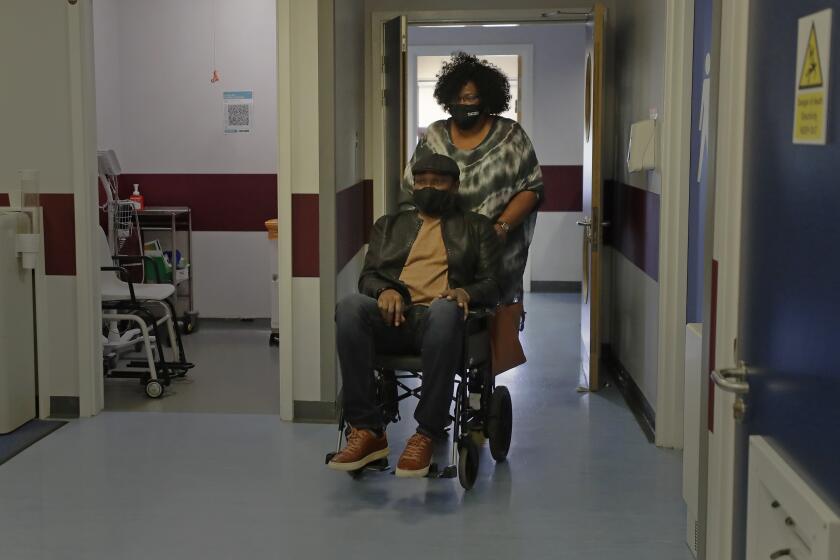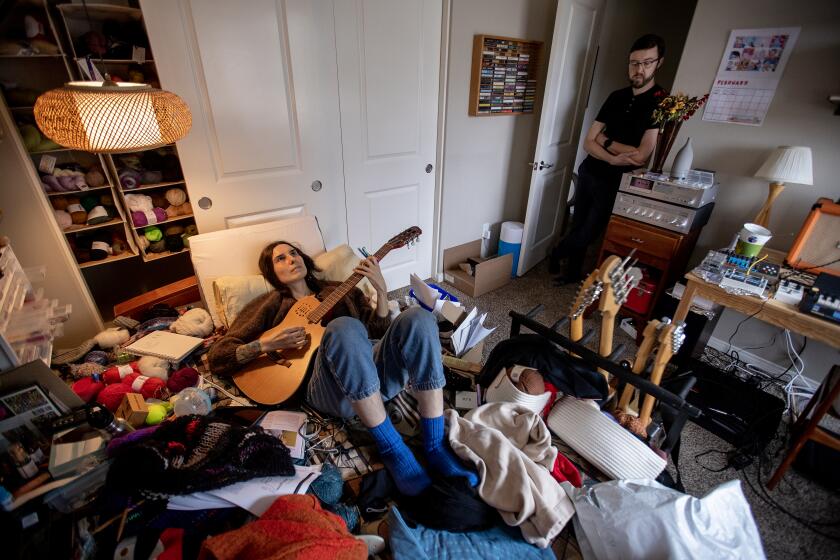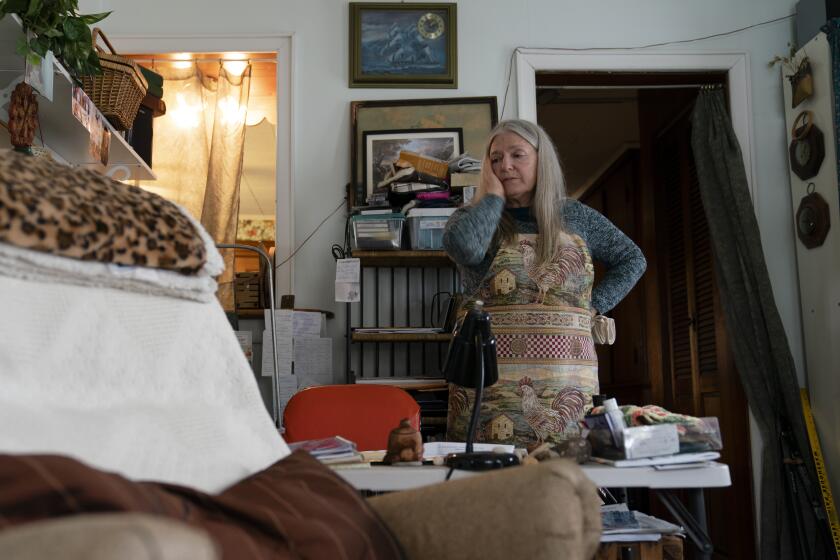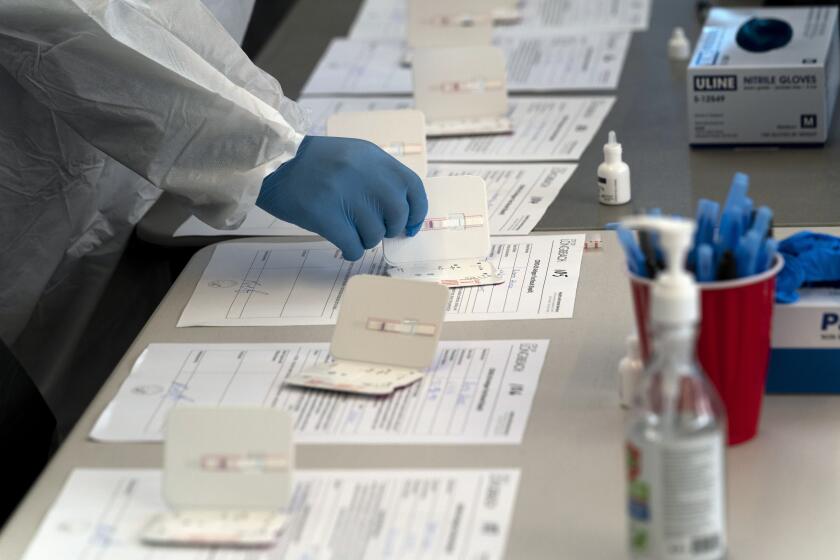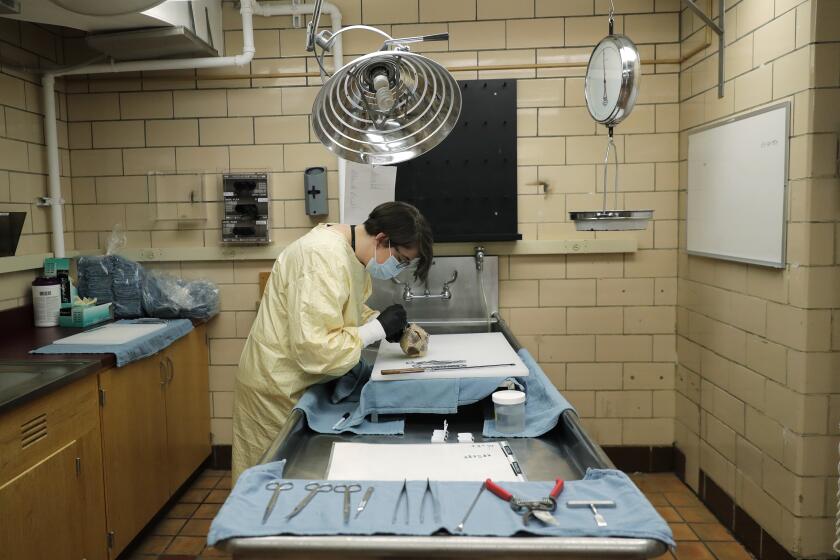Long COVID takes heavy toll on health even as pandemic fades, study shows
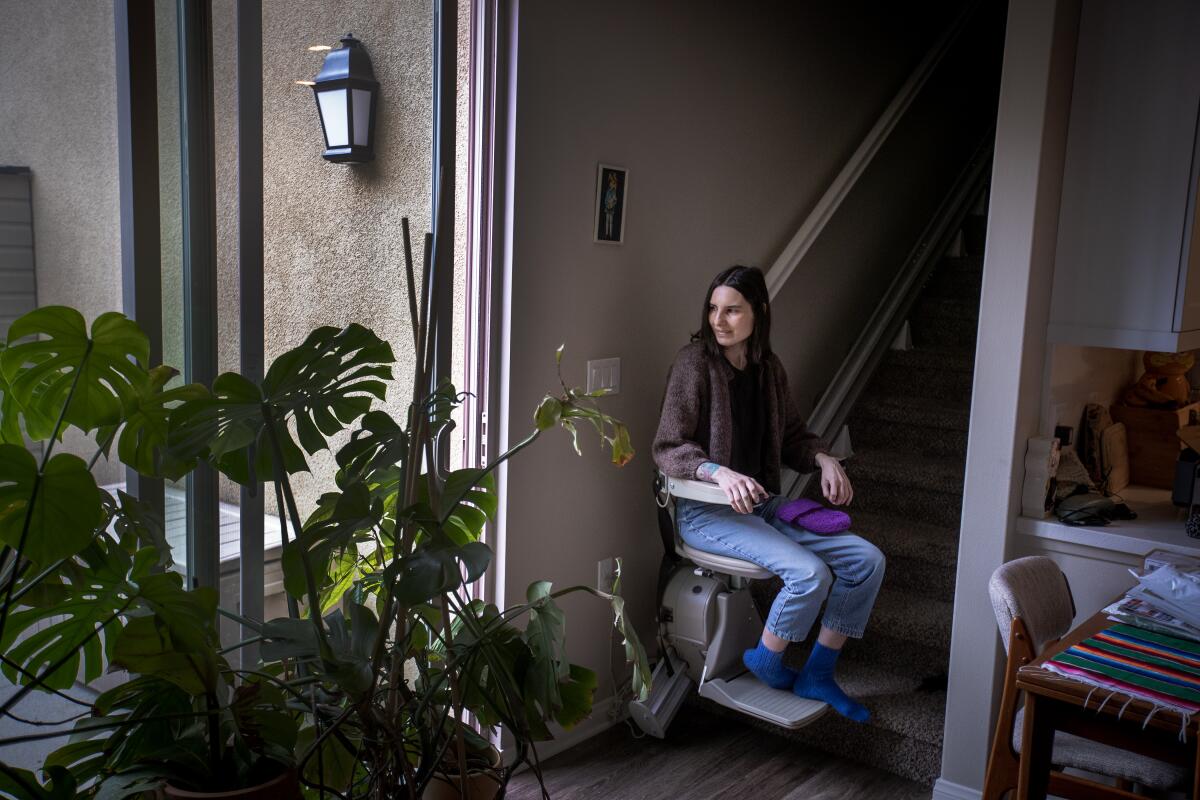
- Share via
One in 10 people infected with the coronavirus during the Omicron era suffered from long COVID, according to preliminary data from a new study — indicating the syndrome remains a notable threat even in the pandemic’s post-emergency phase.
The initial finding, published May 25 in the Journal of the American Medical Assn., was based on 2,231 patients who had their first coronavirus infection on or after Dec. 1, 2021, when the Omicron strain started to dominate the nation.
Of them, data indicate that 224 patients, or 10%, were classified as having long COVID six months after their acute infection. The categorization was made after scientists developed their own data-based definition of the syndrome, based on a number of symptoms that were more likely to be seen in patients with a prior coronavirus infection.
Mild cases of COVID-19 can cause patients to suffer long COVID symptoms, and a new study finds that some of those symptoms can linger for more than a year.
The effort, scientists said, was an important step toward better defining long COVID, which can be hard to pinpoint because it can’t be easily diagnosed or tested for — unlike, say, a heart attack.
“It’s trying to help all of us — both patients and doctors — figure out: How do we tell if someone has long COVID?” said Dr. Joann Elmore, a professor of medicine at the UCLA David Geffen School of Medicine, who wasn’t affiliated with the study.
The study was funded by the National Institutes of Health. The agency said in a statement that the results “are based on a survey of a highly diverse set of patients and are not final. Survey results will next be compared for accuracy against an array of lab tests and imaging.”
The findings, if later substantiated by further research, would add weight to the idea that long COVID represents “a major clinical and public health concern,” as the syndrome was characterized by the study’s authors.
“This is a substantial morbidity,” Elmore said.
Three years and $62,000 in medical expenses later, a musician and her caregiving partner struggle to navigate the financial, mental and physical challenges of long COVID.
And unfortunately, it is still often difficult for patients to get treatment and find a doctor who understands long COVID.
“We don’t necessarily have treatment options that have been studied and proven,” Elmore said. “We’re still waiting for the science to catch up to guide us clinically. And I think the patients are also having a hard time finding clinicians that may even believe that they have long COVID.”
Overall, scientists looked at almost 10,000 people, nearly 90% of whom had been infected with the coronavirus — including people infected before the Omicron era. That meant that about 10% were uninfected, which was important to help scientists distinguish those with symptoms similar to long COVID but who could not be afflicted with the syndrome.
“This study was much more scientifically rigorous than the earlier ones because it at least had a control group,” Elmore said.
Overall, scientists identified about three dozen symptoms more often found in people who have had a coronavirus infection, said Tanayott Thaweethai, lead author of the study and an associate director of biostatistics research at Massachusetts General Hospital and instructor at Harvard Medical School.
They then used a statistical technique to winnow the symptoms that best differentiate people with a history of coronavirus infection. They found about a dozen: postexertional malaise (in which a person feels worse after even minor physical or mental exertion); moderate or severe fatigue; dizziness; brain fog; gastrointestinal symptoms; heart palpitations; changes in desire for or capacity for sex; loss of smell or taste; excessive thirst; chronic cough; chest pain; and abnormal movements.
Researchers then assigned a score to each symptom to help diagnose long COVID. For instance, postexertional malaise has a score of 7; brain fog, 3; and heart palpitations, 2. A combined total of 12 or higher was defined as having the syndrome.
In an interview, Thaweethai cautioned against using the scoring criteria as a diagnostic tool, and warned that a score of less than 12 doesn’t necessarily mean a patient doesn’t have long COVID.
“An individual with symptoms excluded in the scoring system may still suffer from long COVID and nonetheless deserves high-quality care,” Mass General Brigham said in a statement.
As the litany of symptoms suggests, the NIH said long COVID “can affect nearly every tissue and organ in the body.”
“This study is an important step toward defining long COVID beyond any one individual symptom,” said Dr. Leora Horwitz, director of the Center for Healthcare Innovation and Delivery Science at NYU Langone Health and one of the study’s authors. “This approach — which may evolve over time — will serve as a foundation for scientific discovery and treatment design.”
It has been a challenge to estimate the prevalence of long COVID. Past studies often attracted participants who already were experiencing symptoms, making it hard to say anything definitive about the percentage of coronavirus-infected people who then developed long COVID.
But one important trait to this study was its inclusion of more than 2,000 patients infected in the Omicron era who were quickly identified after their initial coronavirus infection — within 30 days — and then followed over months to see whether they developed long COVID.
Thaweethai said the estimate of 10% prevalence of long COVID in the Omicron era was within expectations. It’s not clear whether that estimate will change, given alterations in the dominant subvariant’s makeup.
Long COVID can manifest in different ways, Thaweethai said. Among one cluster, most patients report a loss of smell or taste but few other symptoms. But in another cluster, patients have many symptoms across multiple organ systems.
A new research initiative will explore whether the persistence of coronavirus in the body plays a role in the development of long COVID.
Recently, there had been hope among some experts that long COVID was fading. Perception was that it was becoming less common and less severe during the Omicron era.
“I was even, in the back of my mind, hopeful that this was going away,” said Dr. Steven Deeks, a UC San Francisco professor of medicine who helped collect data for the study.
Deeks said he “actually didn’t think we’d see much [long COVID], because my bias was that much of the worst cases happened back when the virus was more problematic, back when people were not vaccinated, back when people weren’t masking.”
But the prevalence of long COVID documented in the study in the Omicron era was “higher than I would have expected,” Deeks said, though still probably “lower than I think was happening in the past.”
“It’s probably a little bit of everything: The virus evolved, and it might be less pathogenic. It may be less likely to be distributed systemically throughout the body,” he said. “People are now vaccinated, and that certainly helps. Or, if they’re not vaccinated, they’ve had previous infections, and that sort of prepares them for what happened when Omicron came on. People are now getting treated — people are now getting Paxlovid, and that probably prevents long-term complications.”
It’s too early to say for sure, but many doctors believe it’s possible to suffer long-term effects from the Omicron variant of the coronavirus.
In addition, it’s possible those being infected now have been exposed to much less virus.
“I personally have always thought what happened in 2020 early on is that people were not protecting themselves — were not doing social distancing, were not masking, and then would get these massive doses of the virus and that probably led to long-term symptoms,” Deeks said.
Federal survey data indicate that more than a quarter of American adults ever infected with the coronavirus have experienced long COVID symptoms.
The most recent figures, collected April 26 to May 8, also indicate about 10% of American adults and 9% of Californians who have ever had COVID-19 say they are currently experiencing long COVID. These figures suggest millions continue to deal with draining, and sometimes debilitating, symptoms.
Most L.A. County residents who had long COVID reported symptoms severe enough to limit daily activities weeks after they were infected, a survey found.
The study published in JAMA also found that unvaccinated people or those who had COVID-19 before Omicron emerged in late 2021 were more likely to have long COVID and more severe cases. Still, scientists say, those who are up to date on vaccines are not guaranteed immunity from the syndrome if they get infected.
Coronavirus reinfections “were also linked to higher long COVID frequency and severity,” according to the recent study.
Some long-haulers see their symptoms improve over time. Among people for whom the study authors have data, one-third who had long COVID six months after their initial infection no longer had the syndrome three months later, suggesting a significant percentage of sufferers see a degree of recovery.
But there remains a number of people whose persisting symptoms are severe enough they have become disabled.
Even as the emergency phase of COVID-19 has ended, scientists say it’s essential that long COVID research continues. The syndrome is difficult to treat, researchers say, and clinicians often must take a number of approaches to help alleviate symptoms.
Scientists are exploring whether some of the most infectious coronavirus variants came from chronically infected individuals with weakened immune systems.
Los Angeles Public Health Director Barbara Ferrer said she continues to hear from residents suffering from long COVID.
“I regularly hear from individuals who are struggling with long COVID or living with chronic health conditions that create significant risk about their need for continued support,” Ferrer said in a statement last week. “Now that we have entered a new phase of significantly lower danger associated with COVID for many, I hope we aren’t too fatigued to continue to take advantage of available resources and practices that acknowledge the needs of those more vulnerable.”
The county Department of Public Health said residents can take actions to reduce COVID-19 risk besides vaccination, such as organizations reporting outbreaks to the county. Work sites, educational settings and residential congregate areas are required to notify the county of any cluster of coronavirus infections involving at least three linked cases over a two-week period.
The CDC has ended routine reporting of coronavirus case and death counts. Here’s how to figure out how to assess COVID conditions in your area.
Work sites and residential congregate facilities also must report to the county if 5% of workers or residents test positive — even if those cases aren’t linked — if they have more than 100 workers or residents.
The agency also suggested that air ventilation systems at work sites, schools and residential buildings should complete a total changeover of air at least five times an hour in a room and use Minimum Efficiency Reporting Value 13 air filters, also known as MERV 13.
“Simple actions can also help to improve ventilation, including opening windows when the weather allows, using fans and adjusting settings on home heating, ventilation and air conditioning systems so that air does not recirculate,” the department said.
More to Read
Sign up for Essential California
The most important California stories and recommendations in your inbox every morning.
You may occasionally receive promotional content from the Los Angeles Times.
